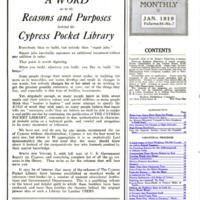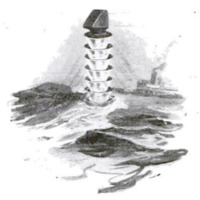Different attempts made during World War I to camouflage the periscopes of submarines
Item
-
Title (Dublin Core)
-
Different attempts made during World War I to camouflage the periscopes of submarines
-
Article Title and/or Image Caption (Dublin Core)
-
Making Periscopes Invisible
-
extracted text (Extract Text)
-
IT was the visibility of the periscope, more than anything
else, that made an effective war against German sub-
‘marines possible. A periscope is useless if it is submerged.
The part of the periscope tube that extends above the
surface of the water is not more than about two inches
in diameter—not much, but enough for the vigilant
watchers on the numerous patrol-boats that cruised in the
danger zone.
Various methods were tried to diminish the visibility
of the periscope. At first they were painted in shades of
blue or gray or green so as to make them blend with the
color of the sea. Coating the tube with aluminum paint
was also tried. But all such attempts at camouflaging
were found to have but little protective value. Covering
the tube with a
green and violet
checkerboard
proved effective
in’ some cases.
A suggestion
that is theoret-
ically good pro-
vides that the
tube of the per-
iscope be sur-
rounded by a
series of conical
mirrors, which,
when seen from
a distance, blend
with the back-
ground because
they reflect the
sea.
-
Language (Dublin Core)
-
eng
-
Date Issued (Dublin Core)
-
1919-01
-
pages (Bibliographic Ontology)
-
73
-
Rights (Dublin Core)
-
Public domain (Google digitized)
-
Archived by (Dublin Core)
-
Davide Donà
-
Marco Bortolami (editor)
 Popular Science Monthly, v. 94, n. 1, 1919
Popular Science Monthly, v. 94, n. 1, 1919
 Screenshot (451).png
Screenshot (451).png
